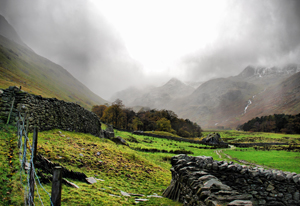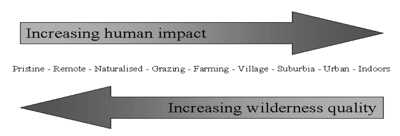

Wilderness and wildlands are those regions and places that are often but not exclusively remote, largely devoid of human features and with natural or near-natural ecosystems. There are a few parts of Europe where large wild or wilderness areas can be found, and that are for the most part untouched by humans and their built structures. There are formally designated wilderness areas in parts of Finland, Sweden, Norway, Ukraine and Western Russia, together with bordering states. There are also elements in Romania, Bulgaria and Italy. However, landscapes with wild and natural qualities can be found in most countries.
These wild or nearly wild areas can be found over a range of transitional landscapes where the condition of the natural habitat is either partially or substantially modified by human activities, such as livestock grazing, forestry, or sporting activities. The characterization of this wildland involves consideration of its scale, the predominance of natural processes, the relative lack of management intervention, and the ability to deliver significant ecological services as well as a host of recreational and social activities. These wild land areas are an important source of spiritual refreshment and inspiration.
Increasingly, wild land areas in Europe are formed from a series of zones, with core, buffer and transition areas, each with different types and levels of management intervention. Wild land in Britain refers to areas of existing or potential high value natural habitat that with restoration of wildlife and natural processes, will progress over time through increased stages of naturalness. Wildness can thus be measured along a 'continuum' with wilderness at one end, continuing through various stages of naturalness, and marginal farmland and forestry at the other.


